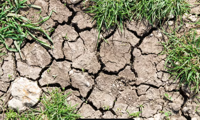Local Wildlife Action
 Our National Character Area
Our National Character AreaEastertown sits in an area where the biodiversity is of national and international importance. These wetlands host hundreds of species of plants and animals. Understanding the nature of the peat deposits and how to protect them is key to maintaining this unique environment.
Click on the image to read a detailed report
All Quiet on the Avian Front
If you can believe it, June 2024 was a dry, cool and sunny month compared to the UK’s longterm average, according to provisional Met Office figures. Rainfall was also in relatively short supply, especially in the south.....(More)
Butterflies of Lympsham
I have always loved the challenge of photographing Butterflies and have travelled around the county to do this. Lockdown gave me the opportunity to explore and record the amazing variety we have on our doorstep.
The first 5 Butterflies to appear in the village are those which hibernate over the winter in the adult (Imago) form, Brimstone, Peacock, Small Tortoiseshell, Red Admiral and Comma. When the temperature rises above 13°C they will start to emerge from the shelter of hedgerows, trees and outbuildings and take to the wing to find food and then a mate......
To continue reading the full, beautifully illustrated article, (click here)
Would you help save our butterflies and moths? (Click here) to discover how.
March Update:
If you have lately noticed the return of a few of the earliest butterflies in your garden, there is more information about what to expect in Jim Bishop's observations of butterflies in our locality. Here are 2 articles of interest:
Butterflies of March - Click Here
Butterflies of April - Click Here
A Dry Spring - La Niña
 It's been a dry spring this year. The cause may be further away than you think. Follow the picture link to find out about La Niña.
It's been a dry spring this year. The cause may be further away than you think. Follow the picture link to find out about La Niña.Follow this link to know more.
Ash Dieback
 We have been living with Ash Dieback for a number of years now. Some new information about hopeful research is overdue.
We have been living with Ash Dieback for a number of years now. Some new information about hopeful research is overdue.Follow this link to know more: Ash Dieback - is there any hope?
iNaturalist
iNaturalist allows anyone with a camera and internet to share nature observations with people all over the world. Whatever livings things you are interested in, everyone from complete beginners who want to find out the name of something they have found, to scientists collecting data for research are welcome!
Dr Victoria J Burton – Scientist and Naturalist
Almost all (98%) UK adults aged 16-24 now have a smartphone. Added to that, the evolution of phone cameras over the past 20 years has been remarkable, with even the most basic smartphone cameras now surpassing older Digital Single Lens Reflex cameras. The latest mobile phone cameras are also very capable in low light conditions.

Contribute to Science. Every observation can contribute to biodiversity science, from the rarest butterfly to the most common backyard weed. We share your findings with scientific data repositories like the Global Biodiversity Information Facility to help scientists find and use your data. All you have to do is observe.

Find out more at: A Community for Naturalists · iNaturalist United Kingdom
Wildlife and Environment Conservation
Wildlife conservation refers to the practice of protecting wild species and their habitats in order to maintain healthy wildlife species or populations and to restore, protect or enhance natural ecosystems.
On this page we will post links and articles by local groups and authors involved in projects to preserve our dwindling wildlife and protect our environment.
Wildlife and Countryside Link
Home - Wildlife and Countryside Link (wcl.org.uk)
Our members campaign to conserve, enhance and access our landscapes, animals, plants, habitats, rivers and seas. Together we have the support of over eight million people in the UK and directly protect over 750,000 hectares of land and 800 miles of coastline.
Sedgemoor Conservation Volunteers
Sedgemoor Conservation Volunteers | Conservation Volunteering group in North Somerset
We are a group of volunteers who carry out practical conservation work on local nature reserves. We are a mixed group of people of all ages and backgrounds. Most tasks take place in the Somerset Levels, but occasionally we work in other areas within Sedgemoor and Mendip District Council boundaries.
Somerset Wildlife Trust
https://www.somersetwildlife.org/volunteering-opportunities
The practical conservation work groups carry out essential habitat management tasks for the benefit of local wildlife. Tasks are dependent on the season, but include coppicing, fencing or walling…
Somerset Hedge Group Website
http://www.somerset-hedgegroup.org.uk/
The Somerset Hedge Group was formed in 1997 to co-ordinate the efforts of individuals and organisations who are concerned about hedgerows. The Somerset Hedge Group promotes responsible hedge management through demonstrations; competitions; advice on training courses, management and grant aid; publicity and other initiatives.
Action for Insects – The Wildlife Trusts
https://www.wildlifetrusts.org/action-for-insects
A report, Insect Declines and Why They Matter, published in November 2019 by an alliance of Wildlife Trusts in the south-west, brought together evidence that showed the loss of 50% or more of our insects since 1970
Ditches and Scrapes
https://www.wwt.org.uk/discover-wetlands/wetlands/ditches-and-scrapes
Ditches and scrapes support a lot of aquatic wildlife, particularly wetland plants and insects such as water beetles, dragonflies and hoverflies. Research has shown that wet features can provide very important feeding areas for breeding wading birds.
Woodland Trust
https://www.woodlandtrust.org.uk/media/51705/state-of-the-uks-woods-and-trees-2021-thewoodlandtrust.pdf
The State of the UK's Woods and Trees 2021 provides clear evidence that there is an urgent need to act now in all corners of the UK. Dutch Elm Disease led to the loss of an estimated 2 million trees in Somerset by the mid 1980’s. With ash dieback alone we stand to lose millions of ash trees, resulting in local extinctions of wildlife species which are dependent on ash.


